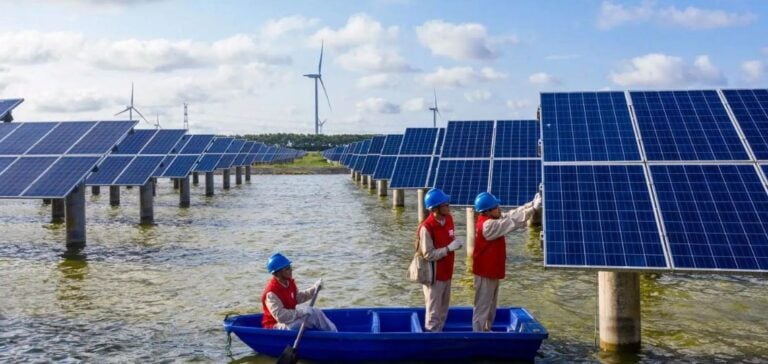China’s carbon dioxide emissions fall in March for the first time since its economy reopened after the Covid-19 pandemic. This drop suggests that China may have reached its emissions peak, according to a recent study by CREA (Centre for Research on Energy and Clean Air). The 3% drop in emissions in March compared with the previous year marks a significant turning point, stresses analyst Lauri Myllyvirta. This reduction was mainly due to theincrease in renewable energy capacity, which covered almost all the growth in electricity demand in March. In addition, a collapse in the construction sector contributed to this drop, with steel production falling by 8% and cement by 22%. These trends point to a transition to cleaner energy sources and a noticeable slowdown in construction.
The impact of renewable energies
The rapid growth in solar and wind power capacity is playing a crucial role in stabilizing emissions from the electricity sector. In March, almost 90% of additional electricity demand was met by renewable sources, despite an increase in demand due to the massive purchase of air conditioners. This development is significant, as it demonstrates the effectiveness of investment in renewable energies. However, even with this growth, solar and wind power still only account for 15% of China’s total electricity production. The authorities are striving to better integrate these sources into the national network to improve their efficiency. The growing adoption of electric vehicles, representing 10% of cars on the road, continues to reduce demand for oil, contributing to the fall in global emissions.
Economic and ecological outlook
China’s future emissions trajectory remains uncertain. Experts differ on whether the installation of new renewable energy capacity will continue to increase at the same rate. Government targets for economic growth could lead to higher emissions, despite advances in renewable energies. China also continues to invest in coal, with numerous power plants under construction. Although growth in coal production capacity slowed slightly in the first quarter of this year, these investments show that the country is not yet ready to abandon this polluting energy source altogether.
Challenges and opportunities for the future
The future of China’s emissions depends on a number of factors, including the government’s energy policy, investment in renewable infrastructure and developments in the construction market. The recent fall in emissions shows that significant progress is possible, but continued efforts will be needed to maintain this trend. Integrating renewable energy sources into the national grid remains a major challenge. Energy storage technologies and transmission infrastructures need to be improved to maximize the use of solar and wind power. In addition, reducing investment in coal and encouraging more sustainable building practices will be essential to a successful energy transition.
Experts agree that China plays a crucial role in the global fight against climate change. As the world’s largest CO2 emitter, China’s actions have a significant impact on global efforts to reduce emissions and limit global warming. Recent developments are encouraging, but much remains to be done to ensure a sustainable future.






















